DOI:10.32604/csse.2023.022023

| Computer Systems Science & Engineering DOI:10.32604/csse.2023.022023 |  |
| Article |
Artificial Intelligence Based Smart Routing in Software Defined Networks
1Department of Information Technology, Government College of Technology, Coimbatore, 641013, India
2Department of Computer Science and Engineering, Dr. Mahalingam College of Engineering and Technology, Pollachi, 642003, India
*Corresponding Author: C. Aswini. Email: aswiniresearch2021@gmail.com
Received: 25 July 2021; Accepted: 25 November 2021
Abstract: In a non-static information exchange network, routing is an overly complex task to perform, which has to satisfy all the needs of the network. Software Defined Network (SDN) is the latest and widely used technology in the future communication networks, which would provide smart routing that is visible universally. The various features of routing are supported by the information centric network, which minimizes the congestion in the dataflow in a network and provides the content awareness through its mined mastery. Due to the advantages of the information centric network, the concepts of the information-centric network has been used in the paper to enable an optimal routing in the software-defined networks. Although there are many advantages in the information-centric network, there are some disadvantages due to the non-static communication properties, which affects the routing in SDN. In this regard, artificial intelligence methodology has been used in the proposed approach to solve these difficulties. A detailed analysis has been conducted to map the content awareness with deep learning and deep reinforcement learning with routing. The novel aligned internet investigation technique has been proposed to process the deep reinforcement learning. The performance evaluation of the proposed systems has been conducted among various existing approaches and results in optimal load balancing, usage of the bandwidth, and maximization in the throughput of the network.
Keywords: Content aware routing; software defined networks; deep learning load balancing
The routing process in information exchange networks is a complex decision-making system, which performs feasible routing in wide range internet. This does the important job of maximizing the performance of the network. At present, the routing process results in the first-come-first-serve basis of minimum distance. The traditional routing process provides results such as the distributed protocols, which schedules the resources of the network based on the resolution of the load [1]. This results in inefficient sharing and usage of the resources. The software-defined network with a centralized administrator minimizes the disadvantages of the traditional routing process [2]. The software-defined network disassociates the power of the network from the information plane and supplies the universal idea about the entire network. The universal optimization of the usage of the bandwidth is achieved by the software-defined network through the centralized administrator [3]. Information-centric networking is a novel information-sharing architecture that supplies a harmonizing methodology to optimize the routing process. The names of the content have been used by the information-centric networking, which facilitates the functions of the networks, such as the delivery of the content and routing, whereas the traditional architectures used the internet protocol addresses [4]. Each object of the content is specified by a distinct identifier as the content name, which allows to mine the content properties from the allotted names. The content naming takes the chance of ill-treatment of the internal network caching. This minimizes the repeated network congestion and provides more than one source routing in the internal network [5]. The information-centric networking provides optimal content retrieval by using the names of the content as network principles. By realizing these types of advantages of information centric networking, it has been used in this research paper to elaborate on and to provide optimal routing for the software-defined networks.
The traditional route processing approaches presumed that rules, regulations, and requisites of the network can be perfectly designed, but it resulted in poor network performance [6]. The increase in various network functionalities and working of “n” number of devices will explore various routing designs among them.
Routing and other applications of the various non-linear networks can be handled in an optimal manner through the latest techniques of artificial intelligence, such as reinforcement learning and deep learning [7,8]. The SDN’s centralized administrator properties and universal awareness of the network provides a vital role in gathering huge communication data, which can be further trained using the methodology of artificial intelligence. Finally, the collected information is given as the input to the proposed Aligned Investigation Technique to provide optimal routing with the help of reinforcement learning.
The rest of the article is organized as follows: Section 2 discusses the design and process of the proposed methodology. Section 3 describes the implementation of the proposed work. Section 4 describes the results. This paper concludes with Section 5.
1.1 Need of Information Centric Networking for Routing
The usage of content names and the removal of the internet protocol address in the layer of the network makes the information-centric networking as the next network paradigm. This provides some variation between the internet protocol and information-centric networking in delivering the content. Appeal and data are the two packets used for the communication, which would exchange among themselves in the information-centric networking based on the client’s interest. As presented in Fig. 1 three common components of the information-centric nodes, such as remaining appeal table (RAT), cache database (CD), and passing appeal (PA) are used. The remaining appeal table is used to stock the unwanted leaving appeals. Passing Appeal is used to pass the appeals based on the names, and the cache database is used for content caching. The content request of the client is conducted through the appeal where the appeal contains a name that identifies the matched content of the name.
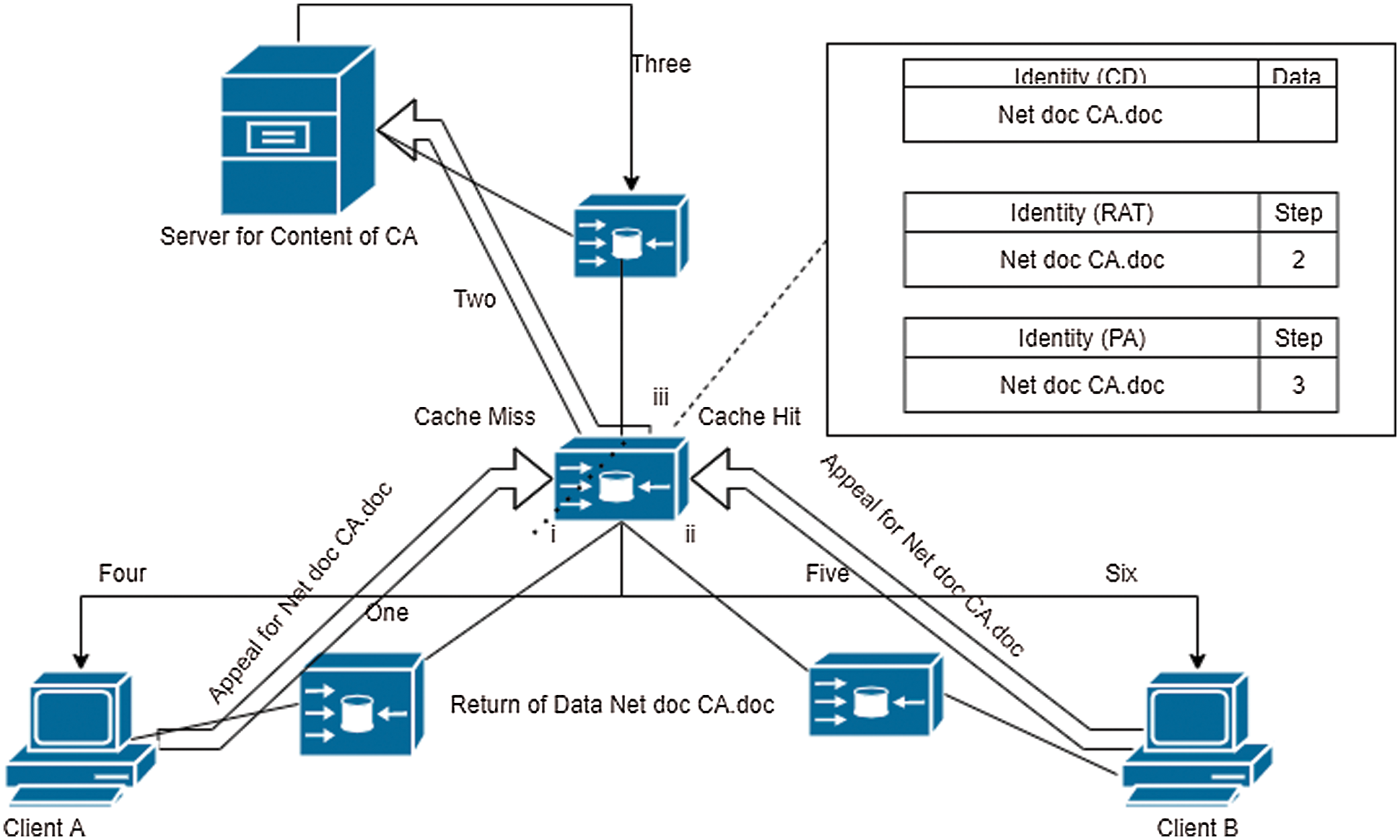
Figure 1: Information centric networking process of content delivery
1.2 Obstacles in Software Defined Networks Routing
There are some obstacles in the routing process of software-defined networks. The major obstacles are content awareness, internal network caching, and access management. For content awareness, it has been difficult for the network to schedule the bandwidth while mining the properties of the content. Generally, the obstacles of the TCP/IP logics caused the difficulty for the software-defined networks to mine the properties of the content. The SDN requires the strong investigation on packets to mine the properties of the content. For instance, an image with a minimum bandwidth requirement and a game with maximum bandwidth requirement will have the same rules for transmission, port identifier, and sender and receiver address.
1.3 Merits and Complexities of Information Centric Networking in Routing
Information-centric networking overcomes the disadvantages in software-defined networks through three different ways. One is the possible utilization of the internal network caches, which schedules the network congestion to various sources in an excellent manner. The next advantage is the elements of the networks that directly chooses and maps the properties of the content with the content names. The final advantage enables the access management based on the content, which provides an optimal allocation of resources. It was already proven that content awareness can provide optimal resource allocation [9]. The existing path switching mechanism, which utilizes the various useful paths that takes the merits of symmetric routing of information centric networking [10]. The maximization in link utilization and minimization in costs for network operators can be conducted through content replication and the internal domain routing process [11].
Although there are some advantages in information-centric networking than the software-defined networks, handling the universal resource allocation and computational tasks are overly complex and inefficient results are incurred when the information centric-networking is used alone. Thus, it is necessary to use the software-defined network controller to manage the resource allocation, traffic analysis, and monitor the network. In this regard, the hybridization of information-centric networking with software-defined networking is conducted, but there some hurdles faced by this hybridization, which performs the routing process. Recording the content bandwidth demand in the tabular model is complex due to the production of various content objects in the network. The content objects created complexity in knowing the status of the network due to its large collection in the network. Thus, gathering the cache information in an efficient manner is very difficult.
1.4 Deep Learning and Reinforcement Learning
Supervised learning, which requires a huge collection of datasets, helped in training the neural network. The complexity in mining the characteristics from the raw dataset is solved by the deep learning through the group of nested simple mappings. More than one hidden layered neural networks are utilized and each mapping is defined by various hidden layers. Depend on this, deep learning provides its perception into the inherent association of big data. Many of the network congestion problems are solved by the deep learning techniques [12]. In this regard, deep learning is proposed in our work for shaping the relationship between the demand of bandwidth and content names. However, it is very complex to use the supervised deep learning for routing process in a non-static network environment. Because supervised deep learning depends upon the heuristic data, which is very complex, costlier to attain, and doubts arise whether a trained deep learning model can be used for a non-static network structure.
2 Design of the Proposed Smart Routing Process
The smart routing process is implemented in the software-defined networks controller that predicts the bandwidth using deep learning and manages the routing process using the hybridization of deep learning and reinforcement learning. As shown in Fig. 2, three major components are present in the design structure. Information-centric networking is in the data plane, while the network and the aligned investigation technique (AIT) is used in the controller. Information-centric networking inputs its cache data and available link bandwidth to the SDN controller. After that, the network constructs and translates the received data as the inputs of the AIT. The AIT interacts with the various algorithms of the routing process, including the hybridization of deep learning and reinforcement learning. This hybridization provides optimal decisions about the routing process and minimizes the errors. The agent of the hybridization model attains the benefits and updates its neural network through the decision and the feedback from the network.
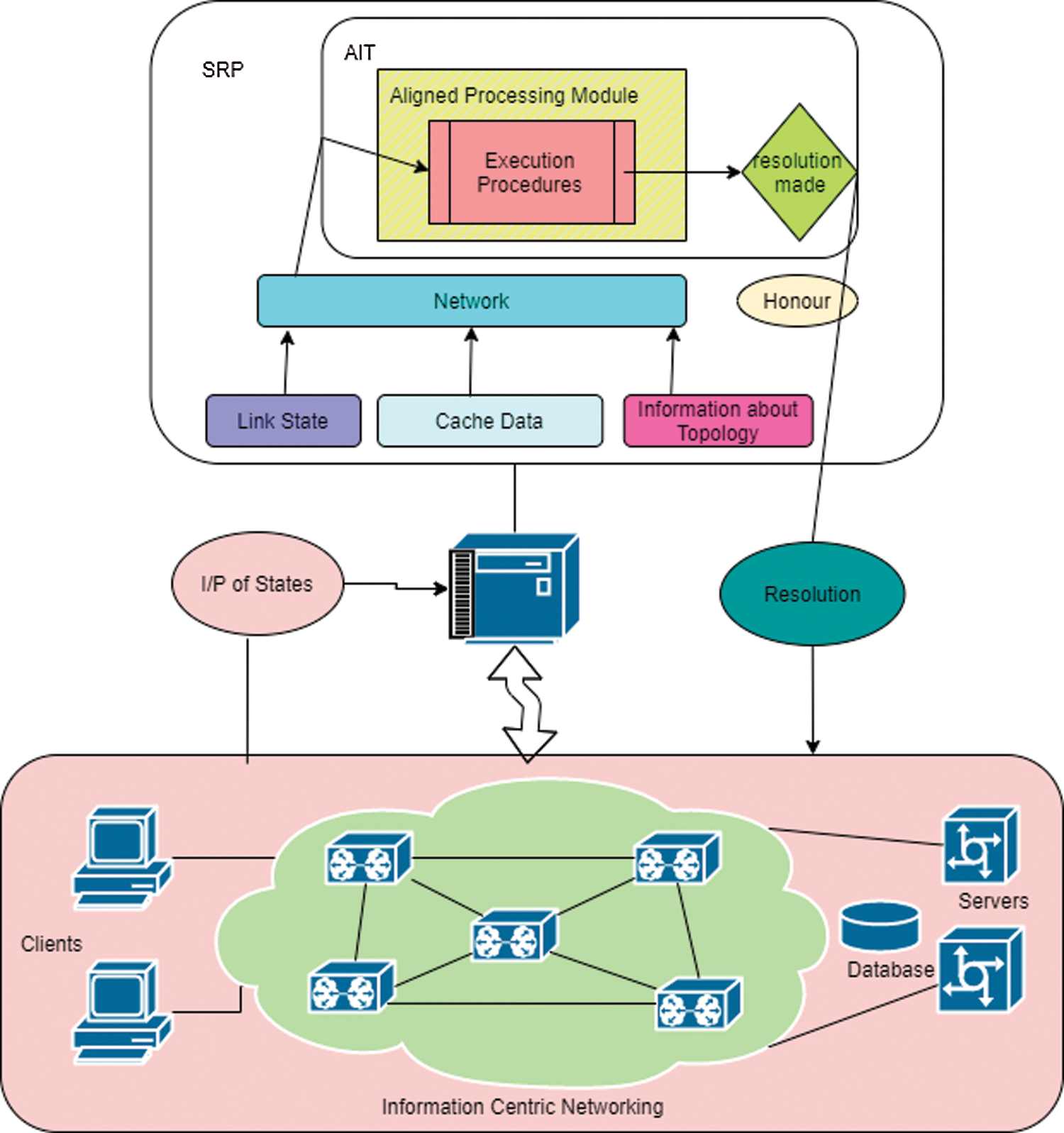
Figure 2: Design of the smart routing process
The stochastic data structure, which is called the bloom filter, is used to denote the set in an effective manner and helps to process the membership queries with minimum complexity as O(1). Zero is set to empty the bloom filter which is represented as “d” bits. To denote n element, hash function h is performed and is set to 1. To identify the non-member of the original set, the hash function is performed to all elements. If the resultant hash value is 0 bits, then that element is a non-member of the set. Counting Bloom filters are used in information-centric networking to manage the cache data. The counters are used in counting bloom filter to represent the inclusion and removal of elements, whereas it is not present in a normal bloom filter. However, due to the expensiveness of the counting bloom filter, it is converted into a bloom filter while being used along with the software-defined networking controller. In the SDN controller, the received cache data forms a d
2.2 Aligned Online Investigation Technique
The hybridization of deep learning and reinforcement learning suits well for the large-scale online decision-making problem to solve the routing process issues in the communication networks. At the same time, it is impossible to include the techniques of deep learning and reinforcement learning to the traditional network system. The significance of the deep learning and reinforcement learning is the character of trial and error. The agent of the deep learning and reinforcement learning enables its optimal working of the neural network based on the merits and demerits received from the network. The demerits are due to improper resolutions that should not occur in the communication networks. In this regard, to include the hybridization of deep learning and reinforcement learning in the routing process, the Aligned Investigation Technique has been proposed [13]. The traditional algorithms, such as the Minimum Path First (MPF) and Balancing the Load (BL) algorithms, are also included in this research to add further merit to the hybridization technique deep learning and reinforcement learning. The solutions of the various algorithms reached the resolution maker to select and execute the one of the decisions made by the algorithms. Likewise, various algorithms with various optimization objectives are combined to understand the utilization of various optimization approaches in a single network environment. The solutions of the traditional approaches can be loaded in the replay buffer and online training of the hybridization technique can be conducted at the same time.
2.3 Merits of Aligned Online Investigation Technique
Good decisions are selected from various algorithms by the resolution maker through multiple approaches. The decision that undergoes minimal completion time is said to have good resolutions and can be chosen for the execution. The errors produced by the hybridization technique deep and reinforcement learning will be filtered by the resolution maker to safeguard the network. By considering the existing approaches as benchmarks and compared to the proposed hybridization technique and the training efficiency of the hybridization technique is maximized. The utilization of various algorithms in the proposed approach produces various advantages to the environment, which enhances the utilization of deep learning and reinforcement learning. It is overly easy to design and implement various approaches and can be evaluated without affecting the communication environment.
2.4 Training the Hybridization Technique Deep Learning and Reinforcement Learning
Although the random selection policy based on deep learning and reinforcement learning approach chose an action based on the random distribution among the action set, this approach will not be chosen for problems based on value optimization which required processing. Our research problem, the routing process, requires the process of optimization, which should be conducted in real values. In this regard, the deterministic approach has been used to optimize the real values. In this deterministic policy approach, the existing policy maintains the parameter Ω for the actor network β
The deep determinant policy equally samples the minimum batches of the state transition from a replay buffer. This process is conducted to eliminate the congestion states, which segregates the deep neural network from the working process. The target networks, such as the actor network and critic network parameters are updated by the deep determinant policy using inactive updates, whereas this update is not conducted in the deep queue networks. The investigation technique is attained by including a random noise process P, which depended on deterministic techniques and is computed as
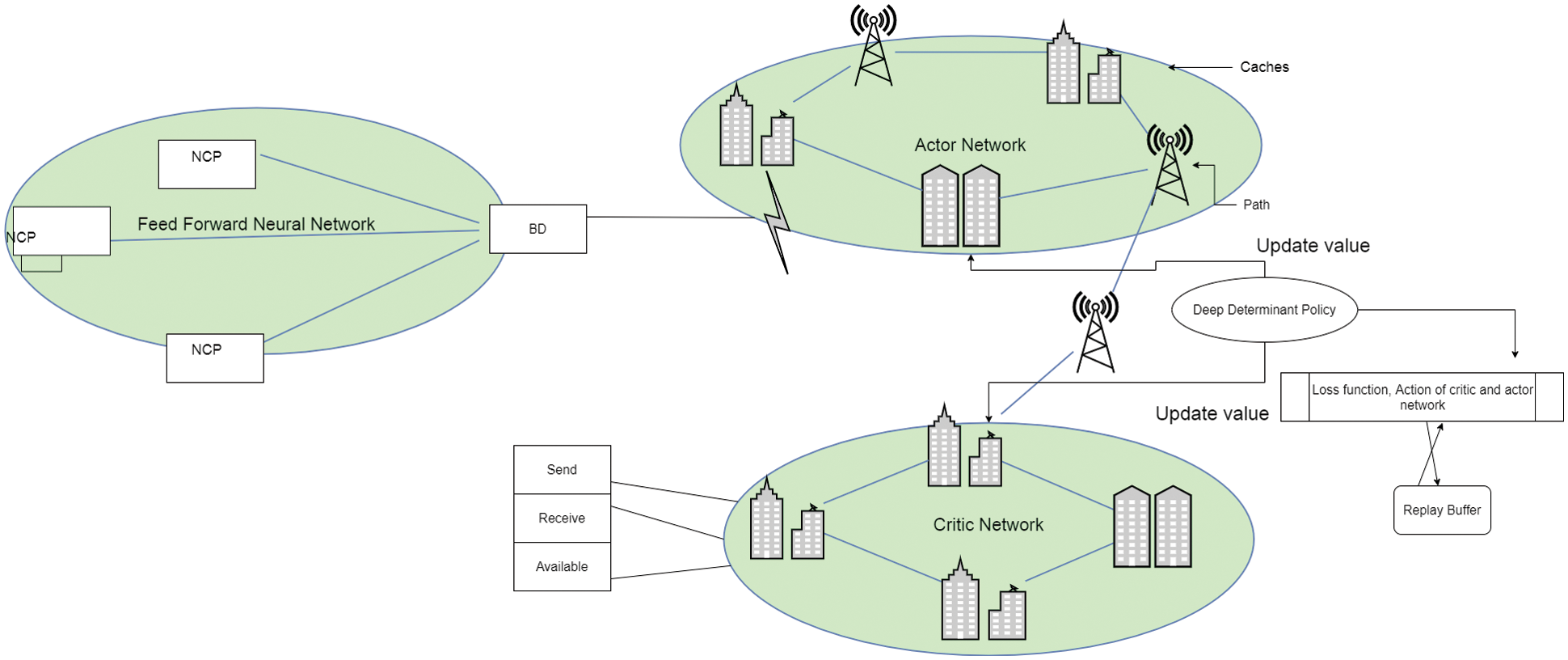
Figure 3: Training the hybridization technique deep learning and reinforcement learning
The structure of the deep and reinforcement training process comprises four components under the states, such as named components (NCP), sender, receiver, and available link bandwidth. Mathematically, T is defined as T = (NCP, send, receive, available). To identify the bandwidth demand and analyze the correlation of various named components, the feed forward neural network is used in the SDN controller. Sixteen hexadecimal MD5 are used alone for coding the named components and then given to the 16 × c neurons. The actor network receives the output of the feed forward neural network. Independent training is given to the feed forward neural network.
The request for the content is given by the sender as an n length binary vector, which belongs to the sender. Receive is the output of the content locating that is also denoted by the n length binary vector. The bandwidth availability of the N links is denoted by availability = (AB1, …, ABi, …, ABn), where 1 ≤ I ≤ N. The link, which is unavailable, is mentioned as failure nodes, which are also disseminated.
The solution of the routing process problem is said to be activity. Precisely, AT = (AT1, ATi, …, ATn, Path), whereas the ATi refers to the segregation ratio for the i-th receiver node and
where
where the average bandwidth available is mentioned as
3 Algorithm of the Proposed Smart Routing Process Aligned Investigation Technique

A smart routing process agent is developed using Tensorflow and Python, constructing a software-defined network simulator on a workstation with Intel i7 processor and 64GB memory. The popular network topologies [14], such as the National Science Foundation Network (TP1), Gigabit European Academic Network (TP2), and Boston University Representative Internet Topology Generator (TP3) are used in this research [15]. In our research, TP1 contains 15 nodes and 20 edges, TP2 contains 50 nodes and 75 edges, and TP3 contains 100 nodes and 300 edges. The bandwidth capability of each network topology is assigned with 100 Mb/s. Through the detailed literature survey, online request distribution falls under the heavy tailed or Zipf-like distribution. According to this, in our content evaluation, 15,000 content objects, along with the Zipf parameter of 1.0, has been used [16].
Based on the aforementioned experimental setup, the required content bandwidth demand may be between 1 Mb/s to 30 Mb/s. In addition to this setup, 20 servers with the same capacity has been connected to the network from various geographical locations [17]. Each and every content server maintains one-tenth of all content objects at all time. The switches available in the information-centric networking has the ability to cache a maximum of 6 percent of all content objects. Based on this, the switches present in the information-centric networking can cache maximum 15,000
To identify the bandwidth demand of a particular content request, the feed forward neural network has been used, which consists of seven hidden layers with 140 hidden units. During the experiment process, the correctness on identifying the bandwidth demand of the content requests is nearly 92 percent. It is clear that the identified bandwidth demand is always below the requested demand, which leads to the identification error [18]. However, this identification error may not be considered due to the overall system performance. Fully-connected hidden layers with 256 neurons are connected to the input layers of the actor network [19]. The outputs of the actor network is represented as the solutions of the routing process issue. The critic value is provided by the output layer of the critic network, which contains a linear neuron.
This section depicts a clear performance evaluation of the proposed and existing systems. The parameter throughput has been considered for the evaluation. The existing systems, such as the minimum path first, balancing the load, and deep and reinforcement learning, are compared with the proposed smart routing process. The experiment had been conducted in the Geant, NSFNET, and random topology. Tab. 1 and Fig. 4 specifies the throughput comparison of the proposed and existing system based on the Geant. The proposed approach performs well and the throughput has been increased compared to the existing approaches. For an instance, for 50 content users, the throughput of the minimum path first is 8.27101, the throughput of balancing the load is 9.33822, and deep reinforcement learning is 6.39508, whereas the proposed approach produces the maximum throughput of 12.5772. The throughput is measured as 102 Mbps.

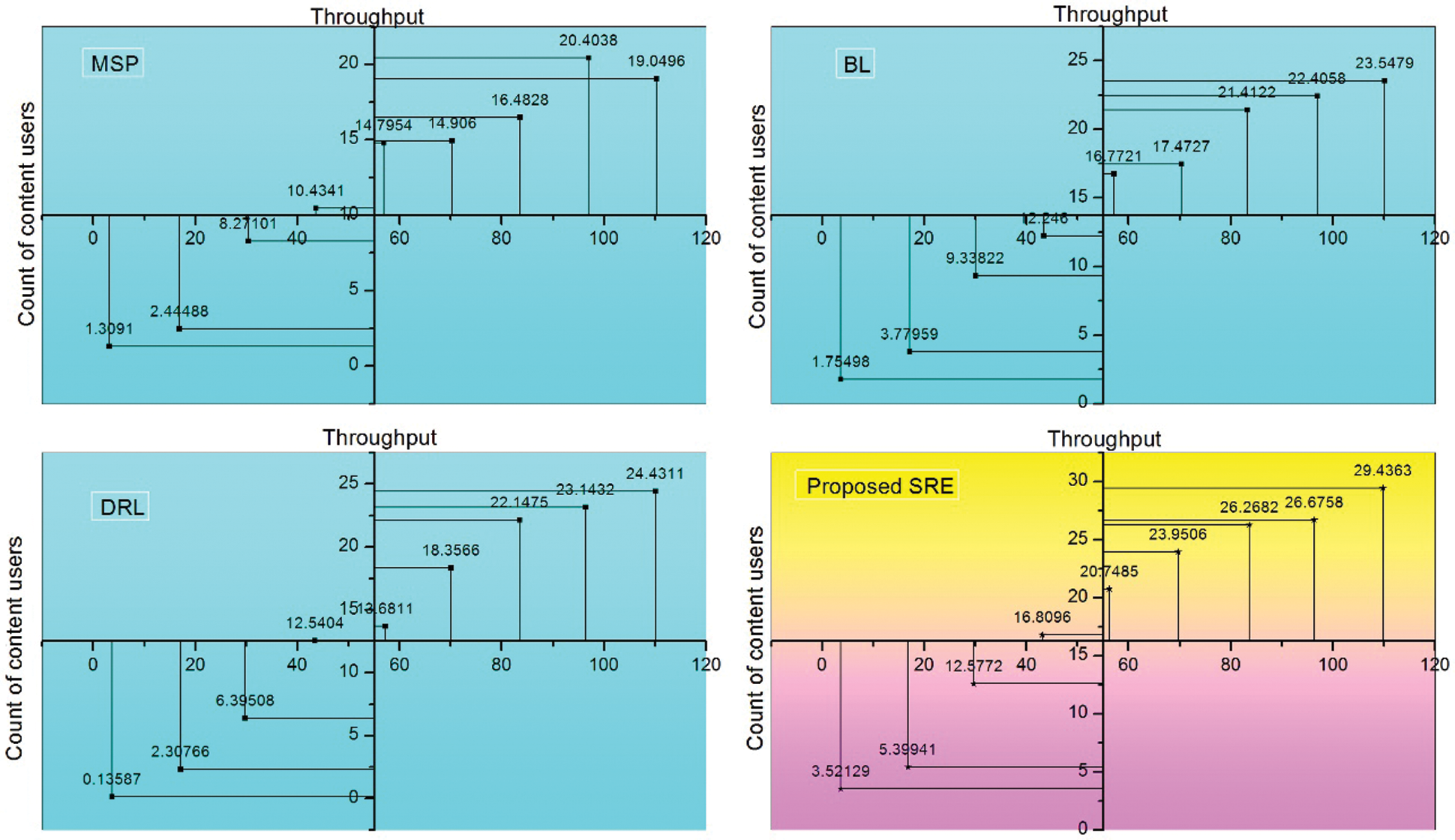
Figure 4: Throughput comparison of the proposed and existing system based on the geant
Tab. 2 and Fig. 5 specifies the throughput comparison of the proposed and existing system based on the NSFNET. The proposed approach performs well and the throughput has been increased, compared with the existing approaches. For an instance, for 60 content users, the throughput of the minimum path first is 10.3448, the throughput of balancing the load is 10.9697, and deep reinforcement learning is 10.1034, whereas the proposed approach produces the maximum throughput of 12.8485.

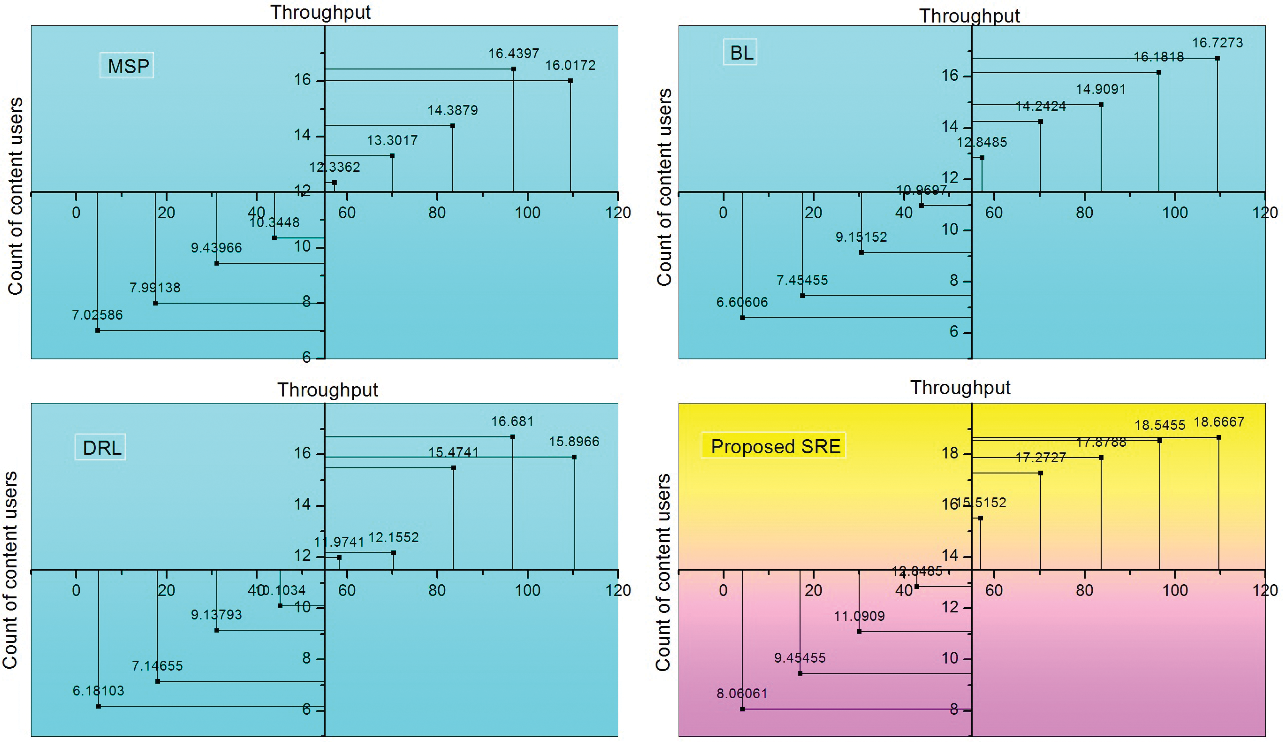
Figure 5: Throughput comparison of the proposed and existing system based on the NSFNET
Tab. 3. and Fig. 5 specifies the throughput comparison of the proposed and existing system based on the random topology. It is clearly shown that the proposed approach performs well and the throughput has been increased compared to the existing approaches. For an instance, for 40 content users, the throughput of minimum path first is 9.02922, the throughput of balancing the load is 11.042 and deep reinforcement learning is 10.5965 whereas the proposed approach produces the maximum throughput of 15.2693.

The Tab. 4. and Fig. 6. specifies the average bandwidth utilization ratio comparison of the proposed and existing system based on the Geant. The proposed approach performs well and the average bandwidth utilization ratio in Fig. 7 has been increased, compared with the existing approaches. For instance, for 60 content users, the average bandwidth utilization ratio of minimum path first is 0.49719, the average bandwidth of the utilization ratio of balancing the load is 0.52858.


Figure 6: Throughput comparison of the proposed and existing system based on random

Figure 7: Average bandwidth utilization ratio comparison of the proposed and existing system based on the geant
The proposed approach with information-centric networking performs well and the throughput has been increased, compared with the existing approaches. For instance, for 40 content users, the throughput of the proposed approach with information-centric networking is 10.9733, whereas the throughput of the proposed approach without information-centric networking is only 7.52203.
To attain the optimal routing process in communication networks, the inclusion of artificial intelligence and information communication networking in software-defined networks has been conducted in this research. To identify the bandwidth demand of the content request, the deep learning approach is proposed. To manage cache, data bloom filters are utilized. Moreover, the Aligned Investigation technique (AIT) is proposed to attain optimal load balancing and throughput. The AIT takes the merits of the various traditional algorithms, including deep and reinforcement learning. The experimental results of the proposed smart routing process performed well, when compared with the existing approaches and evaluated the results of both existing and proposed approaches on various topologies.
One of the important problems is the trial-and-error characteristics of the existing approaches, which has been solved by the utilization of deep and reinforcement learning in the proposed smart routing process. In the future, the enhanced security features are being planned to be implemented in the proposed smart routing process. Through this research; the routing process attains the various benefits through the techniques of artificial intelligence. The deep learning approach, which comes under the data-driven technique, describes the quality and quantity of the data. In this regard, it specifies the challenges in providing the security to the network where the data continues to grow. Therefore, analyzing the utilization of deep learning approaches in order to attain optimal performance of the communication networks is necessary. This technique can be implemented with various deep neural networks for fast processing in the future.
Funding Statement: The authors received no specific funding for this study.
Conflicts of Interest: The authors declare that they have no conflicts of interest to report regarding the present study.
1. C. Y. Hong, S. Kandula, R. Mahajan, M. Zhang, V. Gill et al., “Achieving high utilization with software-driven WAN,” in Proc. SIGCOMM, Hong Kong, China, pp. 15–26, 2013. [Google Scholar]
2. A. A. Mendiola, J. Astorga, E. Jacob and M. Higuero, “A Survey on the contributions of software-defined networking to traffic engineering,” IEEE Communications Surveys & Tutorials, vol. 19, no. 2, pp. 918–953, 2017. [Google Scholar]
3. S. Jain, A. Kumar, S. Mandal, J. Ong, L. Poutievski et al., “B4: Experience with a globally deployed software defined WAN,” ACM SIGCOMM Computer Communication Review, vol. 43, no. 4, pp. 3–14, 2013. [Google Scholar]
4. L. Zhang, A. fanasyev, J. Burke, V. Jacobson and K. C. Claffy, “Named data networking,” ACM SIGCOMM Computer Communication Review, vol. 44, no. 3, pp. 66–73, 2014. [Google Scholar]
5. Z. Feng, M. Xu, Y. Yang, Q. Li, Y. Wang et al., “Joint optimization of content replication and traffic engineering,” in Proc. ICN, San Francisco, USA, pp. 55–63, 2015. [Google Scholar]
6. Z. Xu, J. Tang, J. Meng, W. Zhang, Y. Wang et al., “Experience driven networking: A deep reinforcement learning based approach,” in Proc. INFOCOM, Honolulu, USA, 16, pp. 1871–1879, 2018. [Google Scholar]
7. H. Mao, R. Netravali and M. Alizadeh, “Neural adaptive video streaming with pensieve,” in Proc. SIGCOMM, CA, USA, pp. 197–210, 2017. [Google Scholar]
8. N. Kato, Z. M. Fadlullah, B. Mao, F. Tang, O. Akashi et al., “The deep learning vision for heterogeneous network traffic control: Proposal, challenges, and future perspective,” IEEE Wireless Communications, vol. 24, no. 3, pp. 146–153, 2016. [Google Scholar]
9. K. Su and C. Westphal, “On the benefit of information centric networks for traffic engineering,” in Proc. ICC, Sydney, Australia, 2014. [Google Scholar]
10. I. Moiseenko and D. Oran, “Path switching in content centric and named data networks,” in Proc. ICN, Germany, 2017. [Google Scholar]
11. S. K. Fayazbakhsh, Y. Lin, A. Tootoonchian, A. Ghodsi, T. Koponen et al., “Less pain, most of the gain: Incrementally deployable,” ACM SIGCOMM Computer Communication Review, vol. 43, no. 4, pp. 147–158, 2013. [Google Scholar]
12. M. Lopez Martin, B. Carro, A. Sanchez Esguevillas and J. Lloret, “Network traffic classifier with convolutional and recurrent neural networks for internet of things,” IEEE Access, vol. 5, pp. 18042–18050, 2017. [Google Scholar]
13. T. P. Lillicrap, J. J. Hunt, A. Pritzel, N. Heess and T. Erez, “Continuous control with deep reinforcement learning,” 2015. [Online]. Available: https://arxiv.org/abs/1509.02971. [Google Scholar]
14. S. Knight, “The Internet Topology Zoo,” 2019. [Online]. Available: http://www.topology-zoo.org/dataset.html. [Google Scholar]
15. S. K. Fayazbakhsh, Y. Lin, A. Tootoon chian, A. Ghodsi, T. Koponen et al., “Less pain, most of the gain: Incrementally deployable,” ACM SIGCOMM Computer Communication Review, vol. 43, no. 4, pp. 147–158, 2013. [Google Scholar]
16. Q. Zhang, X. Wang, J. Lv and M. Huang, “Intelligent content-aware traffic engineering for SDN: An AI-driven approach,” IEEE Network, vol. 34, no. 3, pp. 186–193, 2020. [Google Scholar]
17. M. Adil, H. Song, J. Ali, M. A. Attique and M. Abbas, “Enhanced AODV: A robust three phase priority based traffic load balancing scheme for internet of things,” IEEE Internet of Things, pp. 1–11, 2021. https://dx.doi.org/10.1109/JIOT.2021.3072984. [Google Scholar]
18. K. Rohit, U. Venkanna and V. Tiwari, “Opt ACM: An optimized load balancing based admission control mechanism for software defined hybrid wireless based IoT (SDHW-IoT) network,” Computer Networks, vol. 188, pp. 1078–1088, 2021. [Google Scholar]
19. M. Adil, R. Khan, J. Ali, B. H. Roh and M. A. Almaiah, “An energy proficient load balancing routing scheme for wireless sensor networks to maximize their lifespan in an operational environment,” IEEE Access, vol. 8, pp. 163209–163224, 2020. [Google Scholar]
 | This work is licensed under a Creative Commons Attribution 4.0 International License, which permits unrestricted use, distribution, and reproduction in any medium, provided the original work is properly cited. |